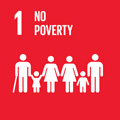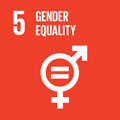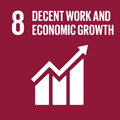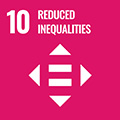- Docente: Eloisa Betti
- Credits: 12
- SSD: M-STO/04
- Language: Italian
- Teaching Mode: In-person learning (entirely or partially)
- Campus: Bologna
- Corso: First cycle degree programme (L) in History (cod. 0962)
Learning outcomes
By the end of the course students will possess the basic methodological tools to study the changes occurring in social and labour relations over the long term, with particular reference to the transition between modern and contemporary, as well as industrial and post-industrial, eras. They will understand the connections between labour, the economy and ethics, as well as placing the changes they have studied in different spatio-temporal contexts, with a focus on the relationship between local and global. They will know how to use the conceptual categories proper to the discipline for a critical analysis of the debated social and cultural issues, with particular regard to different cultures and genders. They will be versed in the specific terminology of the discipline.
Course contents
The Labour History course 2020/21 has been subdivided into three parts, listed as follows.
1. Fundaments of global labour history: it presents the methodological and historiographic instruments for reading the transformations occurring in the human labour in the long-term and by means of a global perspective. Among the topics analysed: What is labour history? Who are the workers (of both sexes)?; The forms of free and non-free labour; The places and the spaces of work; The periodisation of labour history; Labour conflict and regulations; The sources for the history of work.
2. Key words for the history of labour in the industrial and post-industrial societies: proposes a selection of themes, through which it is possible to deepen the labour history in the contemporary age both in the Euro-Atlantic space and in the global south. Among the key words examined: industrialization and deindustrialization; social question; welfares state, trade unions and the workers’ movement; migrations and mobility; unemployment; labour and human rights; labour, environment and health.
3. Labour precarity in historical and gender perspective: proposes a series of in-depth analysis of the topical phenomenon of labour precarity between the industrial and post-industrial age up to the impact of COVID-19, looking at both the local and global dimensions: 1) the historical origins; 2) the categories of workers; 3) forms of labour; 4) local, national and international context
Readings/Bibliography
Alberti Manfredi, Senza lavoro. La disoccupazione in Italia dall'Unità a oggi, Roma-Bari, Laterza, 2016.
Amorosi Virginia, Storie di giuristi e di emigranti tra Italia e Francia. Il diritto internazionale del lavoro di primo Novecento, Edizioni scientifiche italiane, 2020.
Aree deindustrializzate, Numero monografico, “Meridiana”, 85, 2016.
Bartolini Stefano, Causarano Pietro, Gallo Stefano (a cura di), Un altro 1969. I territori del conflitto in Italia, Palermo, New Digital Frontiers, 2020.
Betti Eloisa, De Maria Carlo (a cura di), Genere, lavoro e formazione professionale nell’Italia contemporanea, Bononia University Press, Bologna, 2021.
Betti Eloisa, De Maria Carlo (a cura di), Genere, lavoro e salute dal fascismo alla Repubblica. Spazi urbani e contesti industriali, Roma, Bradypus, 2020.
Betti Eloisa, Le ombre del fordismo. Sviluppo industriale, occupazione femminile e precarietà del lavoro nel trentennio glorioso (Bologna, Emilia-Romagna, Italia), Bologna, Bononia University Press, 2020.
Betti Eloisa, Precari e precarie. Una storia dell'Italia Repubblicana, Roma, Carocci, 2019.
Bonazza Giulia, Abolitionism and the Persistence of Slavery in Italian States, Palgrave Macmillan, 2019.
Boris Eileen, Making the woman worker. Precarious Labor and the Fight for Global Standards, 1919-2019, Oxford University Press, 2019.
Bruno Ziglioli, “Sembrava nevicasse”. La Eternit di Casale Monferrato e la Fibronit di Broni: due comunità di fronte all’amianto, Milano, FrancoAngeli, 2016.
Casellato Alessandro, Zarrara Gilda (a cura di), Corpi al lavoro, Venezia, Edizioni Ca’ Foscari, 2015.
Città e luoghi del lavoro, Numero monografico, “Città e storia”, 1, 2017.
Colucci Michele, Nani Michele (a cura di), Lavoro mobile. Migranti, organizzazioni, conflitti (XVIII-XX secolo), Palermo, New Digital Frontiers, 2015.
Colucci Michele, Storia dell’immigrazione straniera in Italia. Dal 1945 ai nostri giorni, Roma, Carocci 2018.
Gallo Stefano, Senza attraversare le frontiere. Le migrazioni interne dall'Unità a oggi, Laterza, Roma-Bari 2012.
Komlosy Andrea, Musić Goran (a cura di), Global Commodity Chains and Labor Relations, Leiden/Boston, Brill 2021.
Loreto Fabrizio, Sindacalismi, Sindacalismo. La rappresentanza del lavoro in Italia nel primo Novecento: culture, figure, politiche (1900-1914), Roma, Ediesse 2015.
Maul Daniel, The International Labour Organization. 100 years of Global Social Policy. DeGruyter, Berlino, ILO, 2019. (versione italiana: L’organizzazione internazionale del lavoro. Cent’anni di politica sociale a livello globale)
Mechi Lorenzo, L’Organizzazione Internazionale del Lavoro e la ricostruzione europea. Le basi sociali dell’integrazione economica (1931-1957), Roma, Ediesse, 2012.
Mignemi Niccolò, Lorenzini Claudio, Mocarelli Luca (a cura di), Pluriattività rurale e lavoro agricolo in età contemporanea (secc.XIX-XX), Palermo, New Digital Frontiers, 2020.
Ongaro Giulio, Bonazza Giulia (a cura di), Libertà e coercizione: il lavoro in una prospettiva di lungo periodo, Palermo, New Digital Frontiers, 2018.
Pescarolo Alessandra, Il lavoro delle donne nell'Italia contemporanea, Roma, Viella, 2019.
Verrocchio Ariella, Salmieri Luca (a cura di), Di condizione precaria. Sguardi trasversali tra genere, lavoro e non lavoro, Trieste, Edizioni Università di Trieste, 2015.
Teaching methods
The course will take place with a series of lectures delivered by the teacher and seminar meetings with the presence, apart from the teacher, of outside guests. There will also the visits and practical classes in archives and museums, for a direct contact with the sources and the material culture, compatibly with the emergency of COVID-19.
Assessment methods
For the attending students:
The test consists in:
- Oral test on the folder put on the platform virtuale, with a discussion of the aspects dealt with in class.
- Drafting of a critical report on a text chosen, it should be between 12,000 and 15,000 characters in length and it will have to be handed in at least 10 days before the chosen exam date.
- Drafting of a paper on three seminars, to be chosen among the ones proposed during the course. The paper can be substituted by a second critical report, following the reading of a second text to be chosen among the following: Precari e precarie; Le ombre del fordismo; Di condizione precaria.
The evaluation expressed out of thirty takes account of the critical reflective capacity on the sources and the bibliography, of the capacity to frame the themes of the historiographic context of reference, of the appropriacy of the scientific language, of the expositional clarity.
Attending student should attend at least 75% of classes.
For the non-attending students:
The test consists of:
1.Oral test on:
-the folder put on the platform virtuale
-one text from among the following: Precari e precarie; Le ombre del fordismo; Di condizione precaria.
2. Drafting of two critical report on a text chosen, it should be between 12,000 and 15,000 characters in length and it will have to be handed in at least 10 days before the chosen exam date.
The evaluation expressed out of thirty takes account of the critical reflective capacity on the sources and the bibliography, of the capacity to frame the themes of the historiographic context of reference, of the appropriacy of the scientific language, of the expositional clarity.
Teaching tools
There will be a video projector, power point, audio-visual records, iconographic and other didactic material put onto the platform for teaching aids.
Office hours
See the website of Eloisa Betti
SDGs




This teaching activity contributes to the achievement of the Sustainable Development Goals of the UN 2030 Agenda.
